5 Strategies to Prevent Ransomware
Are you concerned about ransomware infections? Use these five strategies to keep your organization’s sensitive data and network safe from ransomware attacks.
Protecting your organization’s data and information against cyberattacks is a top priority. Understanding ransomware attacks and how to prevent them can help keep your business secure.
[youtube https://www.youtube.com/watch?v=l1vJvjBNg18]
What is Ransomware?
Ransomware is malicious software designed to block a victim’s access to their computer system until a sum of money—a ransom—is paid. The ransomware encrypts your data, files, folders, and other information on your computer system and network. This encryption prevents you from accessing your data until you pay the ransom.
Typically, an on-screen warning displays on the screen when a system is infected, informing the victim that their data is encrypted or the computer system is locked. Victims must pay a set amount of money to regain access to their network and data.
To further complicate the situation, cybercriminals often require payment with virtual currency, like Bitcoin, so the transaction can’t be traced. Additionally, the victim may have to pay within a specific amount of time, which adds additional stress.
Unfortunately, paying the ransom doesn’t guarantee that the encrypted data will be unlocked. Sometimes the cybercriminal doesn’t provide the necessary decryption key even though the ransom is paid. Additionally, even if the files are unlocked, the malware infection may not have been removed, leaving the victim vulnerable to further attacks.
Who Can Get Ransomware?
Ransomware is commonly spread by visiting an infected website or through phishing emails . As a result, anyone—from small, startup businesses to large corporations—can be a victim of ransomware. Essentially, anyone who stores data on a computer or network is vulnerable to a ransomware infection.
5 Strategies You Can Use to Prevent Ransomware Infection
Recovery from a ransomware infection can be a complicated process. Fortunately, you can implement strategies to help prevent a ransomware attack.
1. Have a disaster recovery plan in place.
A disaster recovery plan is a critical component to ensure your business can continue to operate or recover quickly if your company’s IT infrastructure becomes compromised.
Backups of your system and critical information should occur at least every day on-site and in the cloud to minimize the impact of a ransomware infection. Be sure that you can verify that the backups are happening.
Some ransomware seeks out your backups and infects those as well. Therefore, having segregated backups can help. Storing your backup separately from your network or computer will help prevent it from being infected.
2. Invest in the best cybersecurity defenses and ensure operating systems and software are up-to-date.
To protect against malicious cyber attacks, use and maintain preventative cybersecurity defenses such as:
- Antivirus software
- Anti-malware software
- Business-grade firewalls
- DNS filtering
- Email filters
It’s critical to keep these preventative software programs up-to-date to ensure the best protection against new cyber threats.
3. Never click on unsolicited links or open attachments in unsolicited emails.
One click on an infected link or attachment can cause your system to become infected with ransomware. Employees should never click on links or open attachments sent from an unknown source.
Be sure to verify an email’s legitimacy before responding to an email. Be careful of compressed files, such as ZIP files, even if you know the sender. Be cautious when clicking onto websites or links to websites in emails. Many malicious website addresses look legitimate at a glance but may have a minor variation in the spelling or domain, such as using a .net instead of .com domain.
4. Participate in regular cybersecurity training.
Cybersecurity training can help ensure your employees know how to avoid cyberattacks, such as ransomware. Ideally, employees should receive regular cybersecurity awareness training, so they are knowledgeable of current cyber threats and how to avoid them.
5. Select an IT service company that stays current on the best cyber protection practices.
When selecting an IT service company, be sure to ask them how they:
- Stay current on cyber threats
- What steps they take to keep your organization’s information secure
- Their procedures or disaster recovery plan if your system becomes infected by a cyberattack such as ransomware
Keeping Your Data Safe in the Modern Business World
Cyber threats are a reality. Fortunately, there are steps you can take to keep your organization safe from cyber attacks. Having a set plan, whether designed by you or through an expert IT service company, will help ensure your business’s databases, files, and relevant information are safe.
Schedule Your Cloud Services Consultation
Ready to make a move to the cloud? TAG is ready to help with any or all cloud services from a private cloud, public cloud, or Microsoft 365 services.
